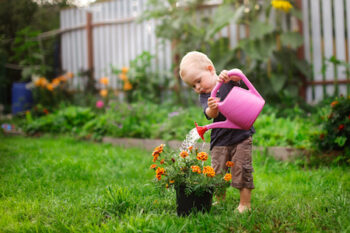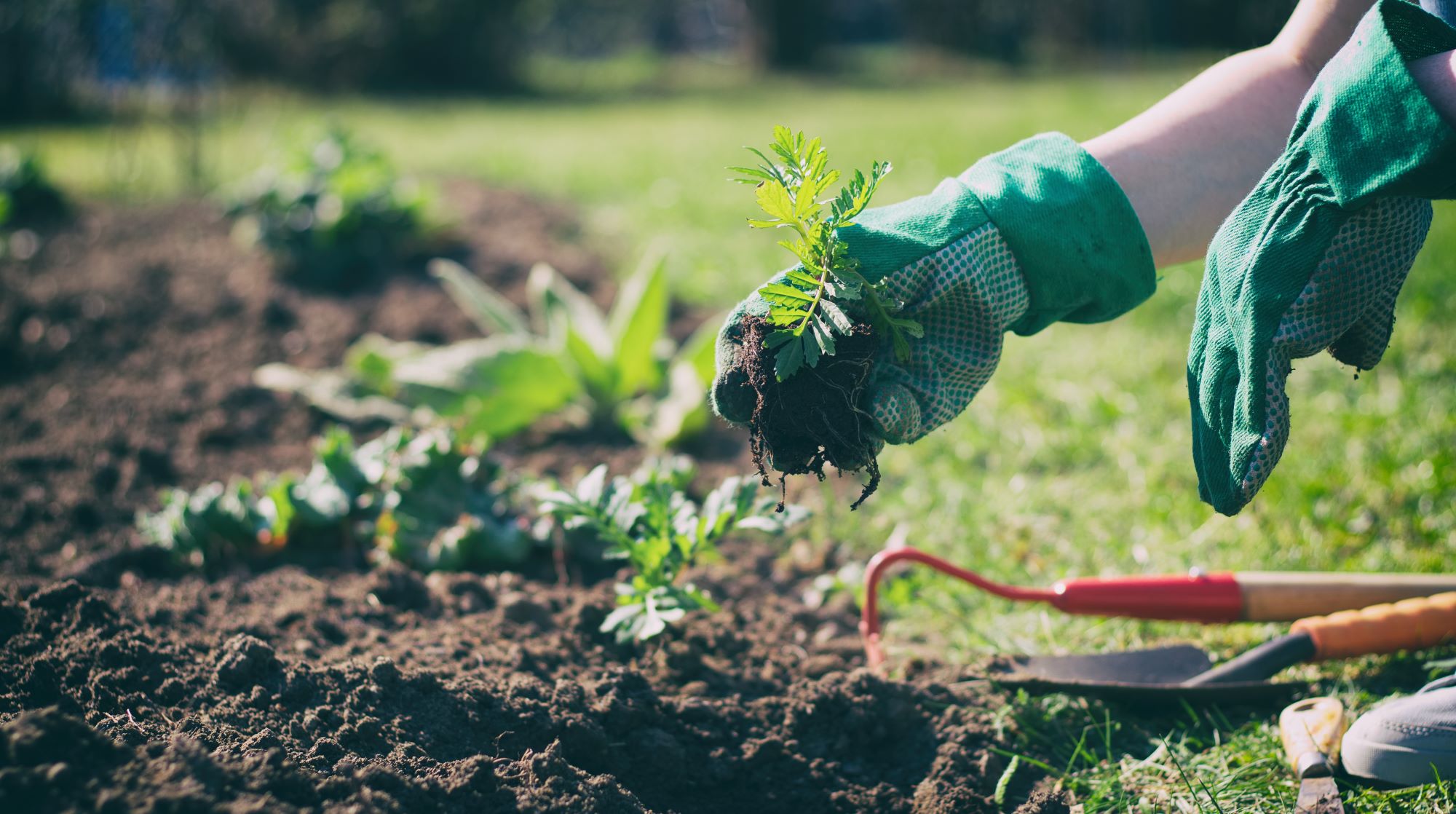Stuck at Home? Plan Your Garden!
While Arizona Governor Doug Ducey has not issued an official stay-at-home order as of today, March 27th, 2020, he issued an executive order on March 23rd that seems to be a preemptive measure in case further restrictions are needed to help prevent the spread of COVID-19. For those of you who’ve opted to stay home as a precautionary measure, now’s the perfect time to plan and plant your spring garden so that you can avoid your backyard landscape!
Tips For Planting a Garden in Arizona
We’ve put together these tips to help you plan your new garden. Keep in mind that the growing season is much longer here in Arizona than other areas of the United States, so some information you find concerning the “best” time to plant seeds may be off.
1. Pick a Spot For Your Garden
The first step to planning your garden is picking a spot for it. There are a few things to keep in mind before settling on any particular place, though, including:
- Amount of Sunlight. Pick a spot in the yard that receives plenty of sunlight. Don’t plant your garden in the shade!
- Soil. Make sure that the soil where you plant your garden is nutrient-rich enough to support the types of plants you plan on incorporating. If you don’t have good soil in the area where you want to plant your garden, consider constructing raised beds. Raised garden beds allow you to dictate in which soil your plants grow. Raised garden beds also
- Water Source. Ensure that you can easily get water to your new garden by paying attention to the water source when planning. It will be easier to tend to your garden if it’s close to a water source so you’re not lugging a hose or watering can across the yard every day.
2. Decide Which Plants to Plant in the Garden
Once you’ve got a good spot for your garden, it’s time to pick your plants!
Pay Attention to Plant Hardiness Zones

The state of Arizona has a wide range of USDA Plant Hardiness Zones (Zones 5-9). Depending on where you live in Arizona, the extreme minimum temperature ranges from -20 to 30 degrees Fahrenheit. For homeowners here in Paradise Valley, now’s a good time to plant your garden as the threat of frost is long gone. On average, the last frost for zone 9b is mid-February. This information also means that you’ll need to look for plants that can withstand the high temperatures of Arizona summer!
Vegetable Garden or Flower Garden?
Many vegetables grow well in Arizona in the spring and summer, including:
- Green beans
- Cucumbers
- Eggplants
- Melons
- Peppers
- Pumpkins
- Sweet Potatoes
- Tomatoes
One of the best parts about living in Arizona is that there are two growing seasons. The following vegetables grow well in the fall and winter in Arizona due to their hardiness and frost-resistance:
- Beets
- Broccoli
- Cabbage
- Carrots
- Lettuce
- Onions
- Peas
- Potatoes
However, vegetable gardens aren’t for everybody! They take quite a bit of work. A flower garden can be just as satisfying, and plenty of colorful plants grow well here in Paradise Valley.
3. Plan Garden Layout
The most efficient way to plant a garden is to group plants with similar needs together. Once you’ve decided on which plants you want in your garden, start grouping them by the amount of sunlight and water needed. Then, you can plan the layout! Keep in mind the following as you plan your new garden:
Accessibility
If you plan on planting vegetables, you’ll want to make sure herbs and any other plants you plan to regularly harvest are as close to the kitchen as possible and that they’re easy to reach. For example, don’t plant your herbs in the middle of the garden, as they grow quickly and can be harvested often.
Vertically-Climbing Plants
Make sure you pay close attention to where you plant vertically-climbing plants such as peas, beans, and cucumbers. You don’t want those plants to provide too much shade, or your other plants will suffer from lack of full sunlight.
Pollination
Depending on the plants you choose for your garden, you may need to think about pollination when planning your garden’s layout. Certain plants have to be near others to pollinate and grow fruit.
Plant Tender Plants Before Roaming Plants
Certain plants, such as tomatoes, peppers, and eggplant, require specific conditions and can be high-maintenance. They require full sun. South-facing walls can also provide heat for these plants.
Roaming plants such as vines (melons and squash) should be planted at the edge of your garden so that the vine’s leaves don’t grow over the other plants. Planting them on the edge of your garden makes it possible for them to spread out without compromising the rest of your garden.
4. Plant Your Garden and Watch It Grow!
After you’ve done all the research and planning for the plants you want in your garden, it’s time to plant the seeds and watch your hard work come to fruition! As tempting as it is to pack as many plants in your garden as possible, resist the urge to overcrowd. Your new plants need room to grow, both above and below ground.
How Can Desert Environments Help You?
Mike Kiesler founded Desert Environments. He has spent over 25 years in every aspect of this industry and has been an accomplished Landscape Architect for over 12 years. His custom landscapes are known for their ability to be appropriate for desert environments as well as blending with the local environment and neighborhood.
The secret to the success of Desert Environments is Mike’s commitment to customer care and quality. Desert Environments guarantees customer satisfaction and offers one of the best warranties in the business. If you need help planning your backyard oasis in Paradise Valley, contact Desert Environments today!

